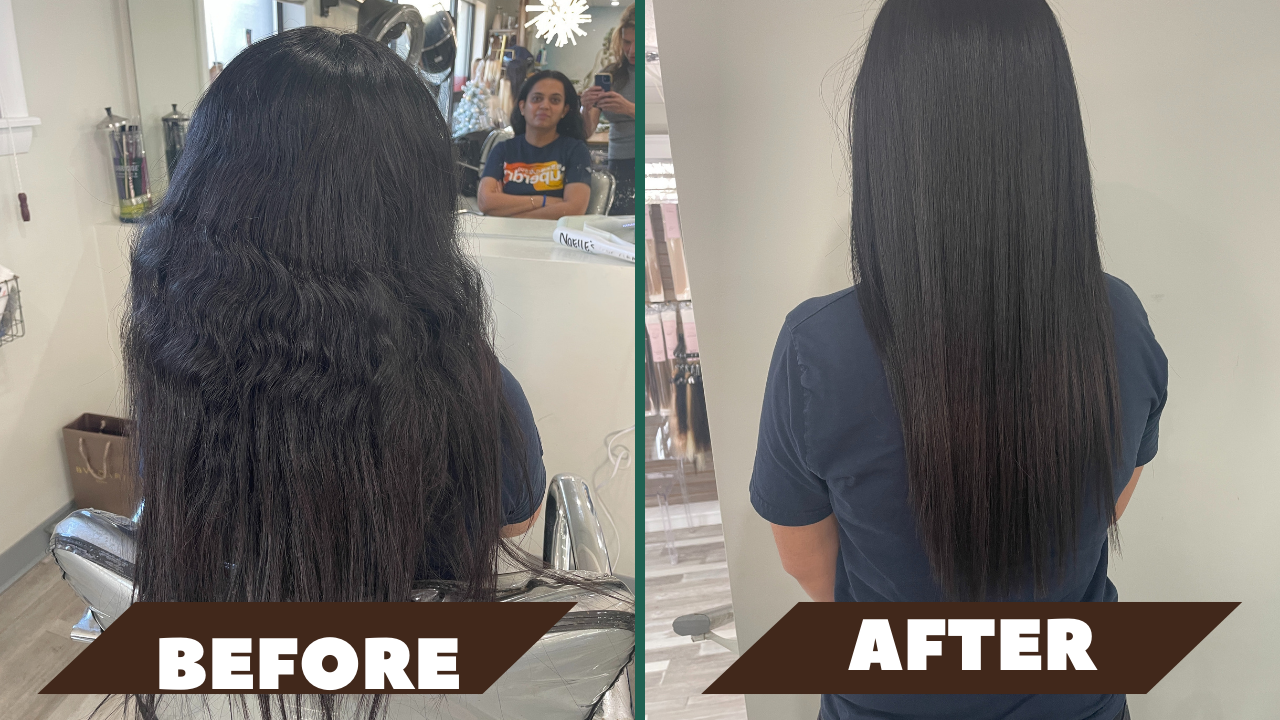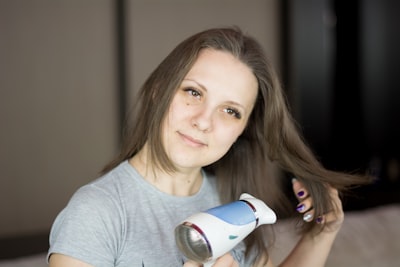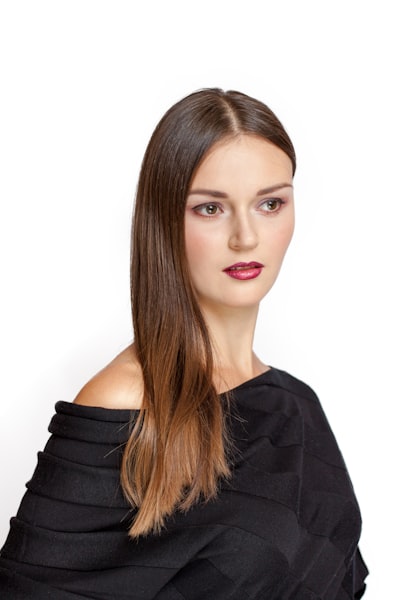Japanese Hair Straightening Massachusetts: Tips for Success
Japanese hair straightening, also known as thermal hair reconditioning, has gained popularity among individuals looking for a permanent solution to straighten their hair. This innovative treatment offers numerous benefits, making it a sought-after option in Massachusetts. In this blog, we will explore the process of Japanese hair straightening, compare it to other straightening methods, discuss the active ingredients, weigh the pros and cons, and delve into considerations such as cost and hair type. By the end, you'll have a comprehensive understanding of why Japanese hair straightening may be the right choice for you.
Understanding Japanese Hair Straightening
Japanese hair straightening, also known as thermal reconditioning, is a hair treatment that alters the natural state of hair, transforming curly, wavy, or frizzy hair into straight texture. The process involves a chemical treatment that restructures the hair bonds, resulting in permanent straightening effects. This treatment is known for its effectiveness in reconditioning hair shaft bonds, making it suitable for various hair types.
 What Is Japanese Hair Straightening?
What Is Japanese Hair Straightening?
Japanese hair straightening, known as thermal reconditioning, is a chemical process that permanently straightens hair. The treatment starts with shampooing and blow-drying the hair to remove dirt, oil, or product buildup. Then, a thermal straightening solution is applied to small sections of hair strands, ensuring complete coverage. After application, the hair is flat ironed at high heat to straighten it. This process reshapes the protein bonds in the hair, giving it a new shape. To set the new shape, a neutralizer is applied, which locks in the reconditioned bonds. The result is straight hair that lasts for months, with little to no daily flat ironing required.

The Process of Japanese Hair Straightening
The process of Japanese hair straightening begins with shampooing, which ensures the hair is clean and free from any product buildup. After shampooing, the hair is blow-dried to remove excess moisture. Once the hair is dry, a thermal straightening solution, containing chemical reconditioning agents, is carefully applied to small sections of hair strands. This solution breaks down the protein bonds in the hair, allowing it to be reshaped. The hair is then flat ironed at a high temperature, sealing in the new shape. Finally, a neutralizer is applied to recondition and lock in the new bonds, setting the straight texture. The entire process can take several hours, depending on the length and thickness of the hair.
Why Choose Japanese Hair Straightening Over Other Methods
Japanese hair straightening offers several advantages over other hair straightening methods, such as keratin treatments, at-home perms, and hair rebonding. Let's compare Japanese hair straightening with these methods to understand why it stands out.

Comparison: Japanese Hair Straightening vs Keratin Treatments
Japanese hair straightening differs from keratin treatments in several ways. While keratin treatments focus on smoothing frizz and reducing curl, Japanese hair straightening permanently restructures hair bonds, resulting in straight hair. Japanese straightening treatment is known to be more effective in straightening, eliminating the need for daily flat ironing, which is often required with keratin treatments. Additionally, Japanese hair straightening offers long-lasting, straight hair, while keratin treatments may require touch-ups every few months.
Comparison: Thermal Hair Reconditioning vs At-home Perms
When comparing Japanese hair straightening with at-home perms, it's clear that professional expertise plays a significant role. Japanese hair straightening treatments are performed by experienced hairstylists, ensuring the process is executed correctly and safely. In contrast, at-home perms lack the reconditioning effects of Japanese straightening, leading to potential hair damage. With Japanese hair straightening, individuals can enjoy long-lasting, straight hair with a higher level of safety compared to at-home perm kits.
Comparison: Japanese Hair Straightening vs Hair Rebonding
Japanese hair straightening reconditions hair bonds, providing permanent straightening effects, unlike hair rebonding treatments. While hair rebonding treatments may straighten hair, they do not offer the same level of straightening as Japanese hair straightening. Hair rebonding treatments are also known to have side effects, such as hair breakage, while Japanese hair straightening does not involve known carcinogens, making it a safer option. With Japanese hair straightening, individuals can achieve straight hair without compromising their hair's natural growth process.
Permanent Straightening Treatments in Boston
To understand how Japanese hair straightening works, it's essential to explore the active ingredient that plays a crucial role in the process.
Role of Ammonium Thio in Hair Straightening
Ammonium thio, a chemical solution, is the active ingredient in Japanese hair straightening treatments. It plays a vital role in transforming natural hair texture into straight hair. Ammonium thio breaks down protein bonds in the hair, reconditioning them to achieve a new shape, resulting in straight hair. This chemical process is permanent, offering long-lasting straightening effects. The neutralizer, which is applied after flat ironing, locks in the reconditioned bonds, made possible by ammonium thio.
Safety Considerations of Ammonium Thio
While ammonium thio is effective in hair straightening, it should only be used by professional hairstylists who have experience with thermal reconditioning treatments. Careful application is crucial to prevent hair breakage and ensure desired results. It's important to consider potential side effects, such as scalp burns and chemical burns, which can occur if the treatment is not neutralized properly. When used correctly, ammonium thio ensures healthy, straight hair without breakage.
Pros and Cons of Japanese Hair Straightening
Japanese hair straightening offers various advantages, but it's essential to consider the potential risks and side effects. Let's explore the pros and cons of this treatment.
Advantages of Japanese Hair Straightening at Noelle Salon
Japanese hair straightening treatment provides numerous advantages, making it an attractive option for those seeking straight hair. The treatment restructures hair bonds, transforming natural, wavy, or curly hair into a straight texture, which lasts for months. This reconditioning process eliminates the need for daily flat ironing, saving time and reducing heat damage to the hair. Japanese hair straightening is suitable for various hair types, including natural, curly, or wavy hair, offering versatility. It enhances hair manageability, reducing frizz, and promoting smooth strands, allowing individuals to enjoy straight hair without the daily struggle of using straightening tools.
Potential Risks and Side Effects
While Japanese hair straightening has numerous advantages, it's important to be aware of potential risks and side effects associated with the treatment. Improper application or incorrect neutralization can lead to chemical burns, hair loss, or breakage, particularly if not performed by an experienced stylist. The chemical solution used in Japanese hair straightening treatments, known as formaldehyde, may have side effects, including scalp irritation. Additionally, hair rebonding through Japanese hair straightening treatments can potentially compromise hair bonds, impacting natural hair growth. In some cases, individuals with natural hair texture may experience reversion, causing hair to return to its original state. Careful consideration and consultation with experienced stylists are crucial to minimize potential risks.
The Lifespan of Japanese Hair Straightening
Understanding the lifespan of Japanese hair straightening treatment is essential, as it allows individuals to make informed decisions about touch-ups and hair care routines.
Longevity of the Straightening Effect
The longevity of the straightening effect achieved through Japanese hair straightening varies depending on individual hair growth, texture, and hair care routines. Generally, straight hair achieved through Japanese straightening remains frizz-free, providing long-lasting manageability. The thermal straightening process sustains straight hair, reducing the need for daily straightening routines. With proper care, including recommended hair care practices, the straightening effect can last for an extended period, allowing individuals to enjoy straight, frizz-free strands.
When is a Touch-up Required?
After undergoing Japanese hair straightening, touch-ups are typically required as new hair growth reveals a natural texture. The need for touch-ups varies, but they are generally needed every six to twelve months, depending on hair growth. Touch-ups help maintain straight hair, preventing reversion and preserving the sleek texture achieved through the treatment. As hair grows, touch-ups reapply the straightening process, ensuring consistent and uniform straight hair. Regular touch-ups contribute to the longevity of Japanese hair straightening, sustaining straight, frizz-free strands.
Deciding if Japanese Hair Straightening is Right for You
From Frizzy curl to a sleek hairstyle
Determining if Japanese hair straightening treatment suits you requires consideration of various factors, including hair type, texture, desired hairstyle, potential risks, longevity of effects, and cost.
Is Japanese Hair Straightening a Good Fit for My Hair Type?
Japanese hair straightening treatment is known for its ability to transform wavy, curly, or frizzy hair into straight, sleek strands. This permanent hair straightening treatment reconditions hair bonds, altering its natural state to a straight texture. It's especially beneficial for those seeking a low-maintenance straight hairstyle daily. Japanese hair straightening treatment suits various hair types, including wavy, curly, and frizzy. Consulting with experienced hair stylists at reputable salons can provide personalized insights into whether Japanese hair straightening treatment is suitable for your specific hair type.
Conclusion
Use Sulfate-Free Shampoo and Conditioners
In conclusion, Japanese hair straightening offers numerous benefits for those looking for long-lasting, sleek, and manageable hair in Massachusetts. Its unique process and use of Ammonium Thio as the active ingredient make it stand out from other methods like keratin treatments or at-home perms. While it provides a smooth and straight look, it's important to consider the potential risks and side effects associated with the treatment. The longevity of the straightening effect is impressive, but regular touch-ups may be required to maintain the desired results. The cost of Japanese hair straightening in Massachusetts can vary depending on various factors, but it is worth considering for those who desire hassle-free styling.













